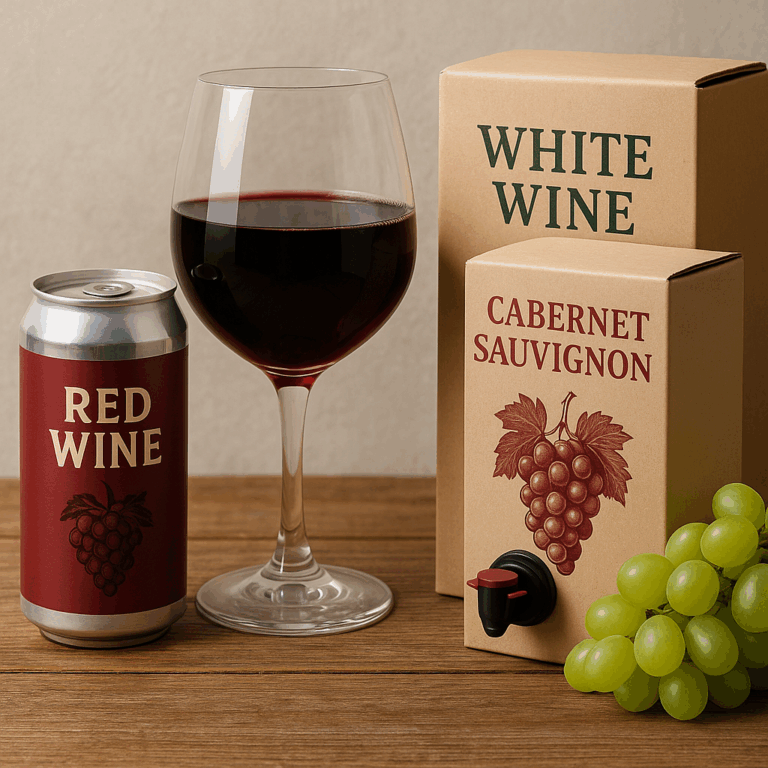Wine Etiquette: What to Know Before Your Next Tasting
Wine tastings are meant to be enjoyable, educational, and welcoming but for beginners, they can also feel intimidating. Between swirling, sniffing, spitting, and all the terminology, it’s easy to wonder if you’re “doing it right.” The good news? Wine etiquette is less about rules and more about respect for the wine, for others, and for the experience.
In this guide, you’ll learn the essential etiquette for wine tastings, whether you’re visiting a vineyard, attending a formal event, or joining a local wine bar experience.
Do You Need to Know Anything Before a Tasting?
Not at all. Wine tastings are open to everyone from first-timers to experts. You don’t need to know grape names, regions, or how to describe aromas. But knowing how to behave in a way that respects the wine and the people pouring it can enhance the experience for you and those around you.
What to Expect at a Wine Tasting
A standard tasting may include a lineup of 3 to 10 wines. You’ll typically receive a small pour (around 1–2 ounces), and you may be standing at a bar or seated at a table. A staff member or sommelier will often explain the wine’s background and guide the tasting.
Some tastings are casual and self-paced, while others are structured with presentations or pairing menus.
Basic Wine Tasting Etiquette
1. Avoid Strong Scents
Skip perfume, cologne, or heavily scented lotion. These can overpower the wine’s aroma and affect everyone around you. Wine tasting relies heavily on smell, so keep things neutral.
2. Hold the Glass Properly
Hold your glass by the stem, not the bowl. This prevents your hand from warming the wine and keeps the glass clean for viewing color and clarity.
3. Taste in the Suggested Order
Wines are typically arranged from lightest to boldest (white to red, dry to sweet). This progression preserves your palate. Follow the order unless otherwise instructed.
4. Use the “Five S” Method
To get the most from each pour, follow these simple steps:
- See: Observe the color and clarity
- Swirl: Gently swirl to release aromas
- Sniff: Smell deeply to identify scents
- Sip: Taste slowly, letting it cover your whole palate
- Savor: Consider the flavors, texture, and finish
You don’t need to say anything out loud unless you want to — the goal is to enjoy and observe.
5. Spitting Is Normal
At professional or multi-wine tastings, spitting is encouraged to help you stay clear-headed and keep your palate fresh. Use the provided spit cups or buckets — it’s not rude, it’s practical.
If you prefer to swallow, pace yourself and hydrate between tastings.
6. Ask Questions — Don’t Be Shy
Staff and winemakers love when visitors are curious. Ask about the grape variety, winemaking style, food pairings, or the story behind the label. There are no wrong questions just interest.
7. Don’t Pretend to Know More Than You Do
There’s no need to impress anyone with technical terms or tasting notes you’ve memorized. Just be honest about what you like or don’t like. Authentic reactions are appreciated more than performance.
8. Be Respectful of Others
Avoid dominating conversations, especially if the tasting is in a group setting. Give others space to ask questions and engage with the host.
9. Don’t Haggle Over Tasting Fees
Tasting rooms often charge a small fee, especially in popular wine regions. Some may waive it if you buy a bottle — but not always. Respect the business model and pay without complaint.
10. Consider Buying a Bottle or Two
You’re never obligated to buy wine at a tasting, but if you genuinely enjoy something, purchasing a bottle is a great way to support the winery or wine bar. Some small producers rely heavily on direct sales.
Dress Code and General Behavior
There’s usually no strict dress code, but casual, neat clothing is ideal — especially if you’re visiting vineyards where you might walk through dirt or gravel. Avoid white clothes if you’re tasting reds. Keep your phone on silent and focus on being present.
Tipping: Yes or No?
Tipping is not mandatory, but in places where staff go out of their way, especially in the U.S. ,leaving a small tip is appreciated. If the service is exceptional, feel free to show your gratitude.
Final Tips for an Enjoyable Tasting
- Eat beforehand — don’t arrive on an empty stomach
- Drink water between wines to cleanse your palate
- Take notes if you’re tasting many wines (your memory won’t last long)
- Be open to trying styles you don’t usually drink
Making the Most of the Moment
Wine tastings are meant to be relaxed, educational, and social. Whether you’re there to discover a new favorite bottle or simply to enjoy the experience, good etiquette helps everyone have a better time including you. So swirl, sniff, sip, and savor with curiosity and confidence.






